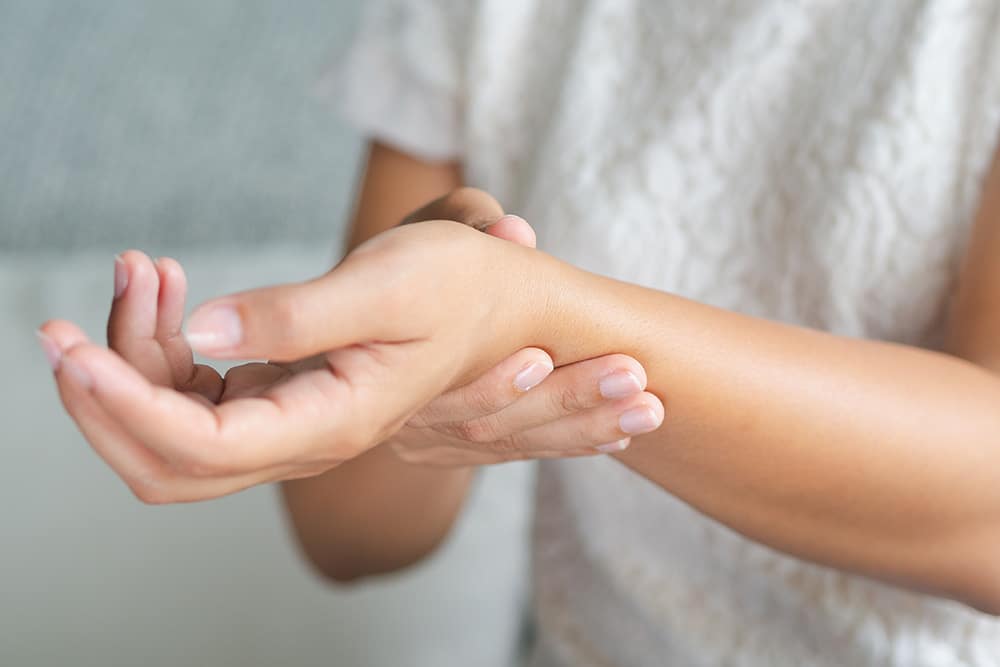De Quervain’s
De Quervain’s is a painful condition that develops in the tendons of the hands and wrists.
De Quervain’s
De Quervain’s is a painful condition that develops in the tendons of the hands and wrists.

What is De Quervain’s?
De Quervain’s is a painful condition that develops in the hands and wrists, affecting the tendons on the thumb side of the hand. Although the exact cause is unknown, multiple causes have been linked. They include overuse and repetitive strain of the joints due to underlying conditions such as rheumatoid and inflammatory arthritis. You’re also more likely to develop this condition if you are pregnant or you have sustained injuries to the wrist or tendon.
There is a range of localised symptoms in the thumb area that may indicate the onset of De Quervain’s tenosynovitis. If you notice swelling, pain, or tenderness on the thumb sides of your wrists, particularly when turning your hands, grasping something or forming a fist, this could be a telltale sign of De Quervain’s. Other common symptoms include a catching, snapping, or sticking sensation when moving the thumb, and general difficulty with moving the thumb or wrist.
There are two simple ways to diagnose tenosynovitis: firstly, by applying pressure to the hand and testing for pain, and secondly, via the Finkelstein test. The Finkelstein test involves enclosing your thumb in a fist and bending your wrist in the direction of your pinky finger. Since both of these tests target the tendons in your hands and wrists, pain is a likely indicator that you may have De Quervain’s.
The simplest treatment option is to avoid any activity that causes pain and swelling, as the symptoms may dissipate without any further action. If this option does not work or the pain is severe, there are a range of non-surgical treatment options available, including splints and anti-inflammatory medication. Surgery is also an option if the pain persists. The procedure involves opening the thumb compartment to relieve pressure and create space for the irritated tendons.
Following surgery and recovery, comfort and strength will return and allow normal use of your hand. The tendons in your hand will grow stronger over time. With any procedure, it is important to let your clinical team know if you experience any tingling or numbness or an inability to move fingers.
After receiving surgery for De Quervain’s tenosynovitis, it’s recommended that you immobilise the site of the injury for two to three days. Applying ice to the site every one to two hours can help with discomfort and inflammation. Care should be taken to keep the stitches in place. Patients who follow these directions have the best chance of making a full recovery from the condition and avoiding risks such as infection or tenderness at the incision site and damage to the radial nerve.
Following surgery, the movement at the site should return gradually. In order to speed up your recovery and restore full motion in the hand, you should also take pain medications as directed and attend regular physical therapy. The rehabilitation period may last anywhere from six to twelve weeks. Most people who undergo surgery regain full and pain-free movement in their hands and wrists.
Preparing for your visit
Dr Cheriachan consults from Norwest on Wednesdays and Blacktown on Mondays and Thursdays.
Your first visit will be used to carefully assess your condition as well as gathering all related health information. It is important that you bring all relevant documents including scans and x-rays. We also ask that you wear clothing that allows freedom of movement as your visit will include a physical examination.